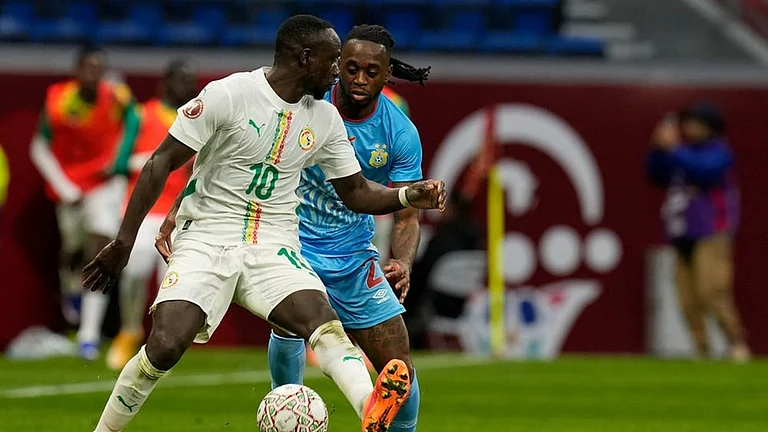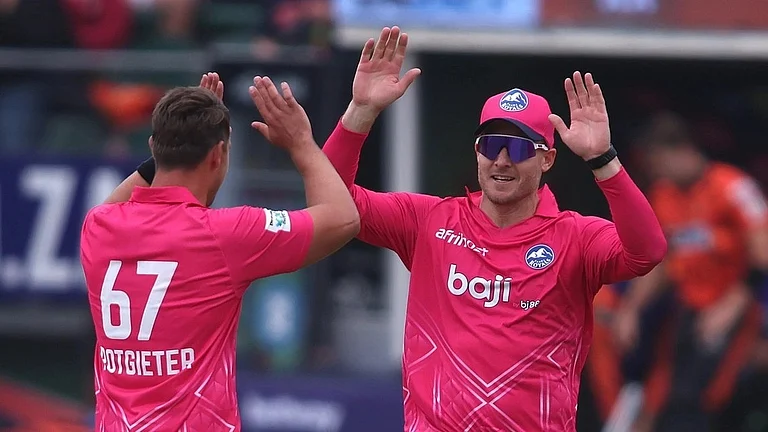“Ours is a battle not for wealth, nor for power; ours is a battle for freedom, for reclamation of human personality.”
— Dr B.R. Ambedkar
The Dalit yearning and fight, as Dr Ambedkar said, has always been for human dignity more than anything else. And one of the ways to achieve it, the oppressed communities believe, is education. That’s how my journey towards becoming a lawyer begins. We are three daughters. My parents, who themselves have witnessed and experienced a life that’s denied self-respect, believed in education as the only tool to craft and build a dignified, meaningful life. Though they could not afford more than school education, they decided to make us professionals. Since medicine is considered the most respected profession and there had been no doctor in our lineage, they wanted my eldest sister to become one. Similarly, they wanted my elder sister to become an engineer—again, it symbolised respect and economic mobility. I was the last one. Since my sisters have already ‘taken’ the other two professions, they thought of law for me! A unique one among the sisters, and one for society as well. Throughout our upbringing, the one word that kept revolving around us was ‘honour’. We were struggling to make ends meet, but my parents were determined to give us the best they could. This belief that education and honour are interrelated exists in most Dalit families—it’s rooted in our history, our movement. It’s what allowed our Ambedkar to achieve the near-impossible. And when I finally graduated in law, I hoped that would automatically render ‘honour’ to us and empower me to fight for my community.
ALSO READ: The Hateras And Us
I was so naive to believe that—that there exist laws, and beyond that my qualifications, and that would suffice. In the course of my practice, I encountered the existence of an altogether different system, where the law is just ink and paper. The Hathras case is an example. The Dalit girl was raped, her tongue cut, her spine broken and left struggling to survive. Clearly, an incident of extreme brutality. Everyone, including the media, was therefore surprised by the handling of the case by the state and the police, the barricading of the family, the illegal abduction of her body, the burning of it in a covert midnight act most of all, and all the rest. However, in my eleven years of experience as a lawyer, especially with caste atrocities, I would say every single atrocity case is handled like this.
Dalits face social, political and economic challenges in all stages of the legal process and the police, the state and the judiciary have become institutional barriers, making justice inaccessible to Dalits. In almost all caste crimes, the police do not register the complaint, delay registering it, or do so only after protests. Even so, the tendency then is to register cases under the IPC—the Scheduled Caste and Scheduled Tribes (Prevention of Atrocities) Act is not invoked. Thereafter, the accused are not arrested, or counter-cases are filed against victims to threaten and force them to withdraw the complaint or compromise. This is the routine...an unceasing marathon that wears you out.
ALSO READ: Red Earth And The Sky A Dalit Blue
Even with the SC/ST Act, where cases are fast-tracked and therefore the chargesheet has to be filed within 60 days, enormous delays are the norm. The special law mandates investigation by an officer not below the rank of Deputy Superintendent of Police; however, such cases are investigated along with other cases. The victim’s caste certificate, which has to be attached with the FIR, is not attached. Such procedural ‘lapses’ naturally end in dismissal. In many cases, the courts condemn the police’s ‘lethargic’ attitude but do not punish them under Section 4 of the SC/ST Act. Offences under the Act are non-bailable. But if the lower courts deny bail to the accused, the high court grants bail or directs the lower court to reconsider the bail application and the accused walks free. The victims are not informed of the bail applications, minimising the chances of intervention. What you get, overall, is therefore a legal landscape marked by low conviction rates. On most occasions, victims have to approach the high court seeking direction for a case to be registered, the special law provisions to be invoked, arrests to be made, chargesheets filed and bail thwarted or revoked. How many Dalit victims would be able to afford it?

Even when they could, it’s often a new battle. For, when a caste atrocity case does reach the court, against all odds, caste prejudices and biases of the judges begin to play out—in adjudicating on whether crime was ‘reliably’ committed, on the credibility of the evidence and witnesses, and determining the accused’s guilt. This is not specific to atrocities committed against Dalit individuals but plays out equally in crimes of collective violence against Dalit communities. From Keezhvenmani to Khairlanji, the courts have rendered unconditional impunity to perpetrators from dominant castes and condoned grievous offences.
ALSO READ: Casteaways
In 1968, forty-four Dalits, including 16 women and 23 children, were burnt to death in Keezhvenmani, Tamil Nadu. The Madras High Court acquitted the accused, setting a tradition of sorts. Since then, courts have invariably followed that precedent. The Patna High Court acquitted the accused in the 1996 Bathani Tola incident where 19 women and children were killed. The very next year, 1997, saw all of 58 Dalits, including 27 women and 16 children, massacred. Eight of these women were pregnant at the time and five women had their breasts chopped off. The Patna High Court acquitted the accused again. In the Shankar Bigha incident, 23 Dalits, including five women, seven children and a 10-month-old baby, were brutally murdered, and a district court in Bihar acquitted the accused. The Khairlanji murder of four family members in 2006, in which the mother and daughter were paraded naked and raped before being killed, ended up in a conviction, but the Nagpur bench of the Bombay High Court observed no caste motive.
ALSO READ: Politics As A Sedative
This culture of impunity, as manifested in two major cases of sexual violence against oppressed women, is what led to the reformation of laws—changing the notion of rape. In the first case, Mathura, a young tribal girl aged between 14 and 16, was raped by two policemen while in custody at Desaiganj police station in Gadchiroli district, Maharashtra, on March 26, 1972. The sessions court had stated that, since she was a tribal girl, she was “habituated to sexual intercourse”, that voluntary consent was present and rape wasn’t proved. On appeal, the Nagpur bench held that passive sub- mission due to fear, induced by serious threats, could not be construed as consent or willing intercourse...and sentenced the accused. But, in September 1979, the SC reversed the conviction, holding that Mathura had raised no alarm; that there were no visible marks of injury on her body, thereby suggesting no struggle and therefore no rape. The judge noted that, because she was used to sex, she might have incited the policemen—who were drunk on duty—to have intercourse with her.
ALSO READ: Media’s Conspiracy Of Silence
Then came the Bhanwari Devi case of Rajasthan. On September 22, 1992, the social worker was gang-raped by five men for stopping a child marriage. The attackers were Gujjars, the dominant caste in Bhateri village. Bhanwari Devi and her husband, Mohan Lal Prajapat, were Kumhar, the potter caste. In a shocking decision, the Jaipur district and sessions court acquitted all five accused, observing that “rape is usually committed by teenagers, and since the accused are middle-aged and therefore respectable, they could not have committed the crime”. The court actually said that “an upper-caste man could not have defiled himself by raping a lower-caste woman” (sic), also that Bhanwari’s husband could not have passively watched his wife being gang-raped. By the time the appeal was heard by the Rajasthan High Court in 2007, two of the accused were already dead.
ALSO READ: Interjections, Intersections...
In both cases, the legal system failed women of oppressed castes and discounted the sexual violence they faced. But the after-protests of the Mathura case eventually led to amendments in India’s rape laws. The Criminal Law Amendment Act 1983 brought changes via Section 114 (A) of the Evidence Act, providing that if the victim says she did not consent to sexual intercourse, the court shall presume she did not consent. Section 376 of the IPC underwent a major change with the addition of Sections 376A-D—it made custodial rape punishable; the burden of proof was shifted from accuser to accused once intercourse was established; in-camera trials and concealment of victim identity were introduced. And the Bhanwari Devi case, taken up as a PIL before the Supreme Court by women’s organisations, led to the ‘Vishakha Guidelines’, later enacted as the Sexual Harassment of Women at Workplace (Prevention, Prohibition and Redressal) Act, 2013. The progressive aspect of law, however, exists in another realm. On the ground, the old impunity rages—as does dominant caste use of violence as a tool of oppression and revenge against Dalits. What is the use of law when its executors—police and the courts—act collectively as the instrument of dominant caste power? “The police and the magistracy are the kith and kin of caste Hindus. They share the sentiments and prejudices of caste Hindus against the Untouchables,” Ambedkar had said. That perseveres. Hathras is the latest proof that those modern institutions have been turned into tools of Brahminical power, more interested in maintaining Sanatana order than producing real, collective justice. Only deep structural reforms and power-sharing can change this.
***

Cynthia Stephen
Activist, gender and development policy analyst
When India became a republic with the promulgation of a constitution with liberty, equality and non-discrimination as its foundational values, it was a total departure from the dominant norm of an unequal society, where people are valued based on gender, caste and class, based on the Manusmriti, the book of law of the Vedic religion. But 70 years later, we find increased gender inequality and rising violence against women and Dalits, especially Dalit women and girls, because we have regressed into Manuwadi practices, especially after Hindutva forces became politically powerful. Every citizen has a duty to fight to restore these constitutional values, and against caste and gender discrimination.
(Kiruba Munusamy, a Supreme Court advocate, founded Legal Initiative For Equality as part of her pursuit of social and political justice. Views are personal.)





















